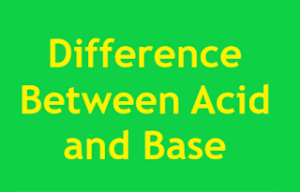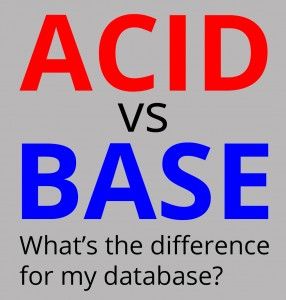Table of Contents
What Are Acids? Difference Between Acid And Base
Difference Between Acid And Base. The hydrogen-containing substances which can donate protons or hydrogen to other substances and remain energetically favourable after a donation of h+ ion are called acids.
Acid turns the blue litmus red.
We use acids in our daily life. Acids are sour. We drink orange or grapefruit juice which has citric acid that is also known as vitamin C. When milk is sour, it contains lactic acid. We use vinegar in our cooking which contains acetic acid.
Milk, yoghurt, vinegar, orange, lemon, grapes, tomatoes, apples and ant are acids.
Properties Of Acids:
Acids are good conductors of electricity.
Acids react with those substances that produce hydrogen ions.
These are corrosive.
Their pH value is less than 7.
These are sour.
What are bases?
The substances which can accept hydrogen ions to other substances are called bases. The bases that dissolve water are known as alkali. The bases are bitter in taste and slippery in texture. It turns the blue litmus red.
Bases are used in our homes like Drain cleaner, laundry detergent, alkaline batteries, soaps and bath products, bleaching powder, sugar, baking soda, and clean grease.
Properties of bases
Bitter in taste.
In aqueous solutions, they are good conductors of electricity.
The pH value of bases is always greater than 7.
Have a buttery texture when touched.
These substances release hydroxide ions when dissolved in water.
Difference Between Acid And Bases.

| Comparison Basis | Acids | Bases |
| Definition | A substance that donates hydrogen(proton) and accepts the electron pair in the reaction. It increases the concentration of H+ in the solution. | A substance that releases hydroxide in an aqueous solution. It denotes electrons and accepts protons. |
| Litmus Paper Test | It turns the red litmus blue. | It turns the blue litmus red. |
| Bronsted Lowry Theory | An acid donates the protons. | A base accepts the protons. |
| pH Value | Acids have a pH value of less than 6. | Bases have a pH value of more than 7. |
| strength | Its depends on hydronium concentration. | Strength depends on hydroxide concentration. |
| Taste | It is sour. | It isn’t enjoyable in taste. |
| Phenolphthalein | The acid remains colourless. | The base is pink in colour. |
| Chemical Formula | The chemical formula starts with H.
Example hydrochloric acid HCl |
The chemical formula ends with OH.
Example sodium hydroxide NaOH. |
| Uses | In carbonated drinks, household cleaning agents, processing leather, preserving the food, and fertilisers. | Uses in soap, detergents and antacid medicines. |
Theories Of Acids And Bases: Difference Between Acid And Base
Arrhenius Theory:
A Swedish scientist August Arrhenius defined that acid as a substance that increases the concentration of H+ when dissolved in water. These hydrogen ions make hydronium ions when dissolved in water.
In the same way, Arrhenius defined that base as a substance that increases the hydroxide ions when dissolved in water. The critical limitation of this theory was that it failed to explain why substances start lacking hydroxide ions from the base solution dissolved in water.
Bronsted Lowry Theory
This theory explains that acid is a proton donor and base is a proton acceptor.
The acids donate hydrogen ions, therefore, increase the concentration of hydrogen in water.
The bases accept hydrogen ions, therefore, increase the concentration of hydroxide in water.
An essential limitation of this theory is why substances lack hydrogen ions while having acidic properties.
Lewis Concept: Difference Between Acid And Base
This theory does not have a hydrogen atom in its definition.
Lewis explains that acids have an empty orbital, so it accepts the electrons, and the basis has a lone pair of electrons, so it acts as an electron acceptor.
Lewis acids have electrophilic qualities, while lewis bases have nucleophilic qualities.
The Lewis acid accepts electrons of the lewis base and forms a coordinate covalent bond in the reaction. The new product is called lewis addict.
The limitation of this theory is that it does not explain the reactions of acid bases, which don’t form the covalent bond.
Also Read: how to check jazz balance


